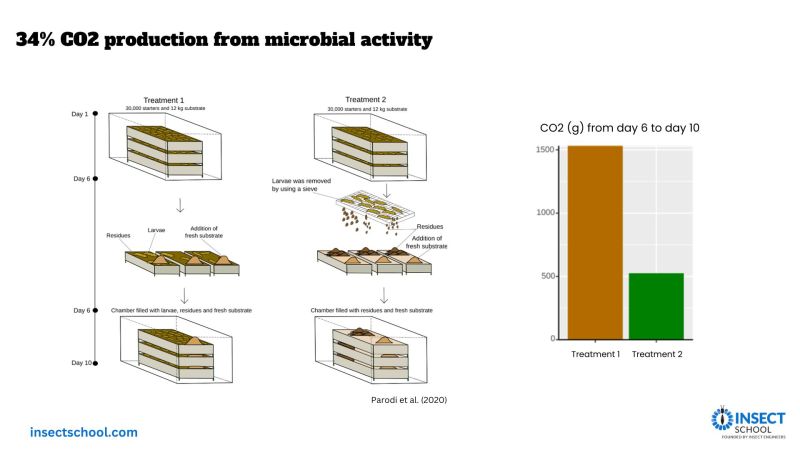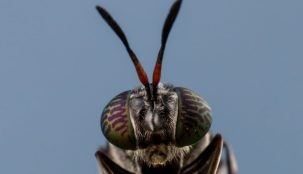Microbes and CO2

When tiny living things called microbes do their work, they make CO2. This makes up about 34% of all the emissions.
With 2 respiration chambers (1 & 2), in each chamber Parodi et al. (2020) put 30000 5-day-old larvae and 12 kg of fresh substrate they like to eat.
After a while, when the CO2 goes really high and then starts to go down (on Day 6), both rooms open. In chamber 1, 6 kilograms of fresh substrate are added, and in chamber two, we sieve all the larvae and put the leftover stuff (frass) back with some new fresh substrate.
Then, watch the CO2 from Day 6 to Day 10 to see how much comes out.
Here’s the interesting part: the CO2 from chamber 2 (the leftover stuff plus new substrate) is 34% of the CO2 from chamber 1 (leftover stuff plus new substrate plus larvae). This tells us that the little microbes are doing a big job making CO2.
We know that healthy bacteria can help the BSF larvae eat better and grow well. But if there are too many microbes, they can make too much gas and heat, which isn’t good.
So, when we take care of the larvae, we need to think about these microbes and how they affect the CO2 they make.

Comments on this post
Comment posted by Shamim Malik:
So how do we release Carbon dioxide from the greenhouse. Remember we work in the greenhouse










